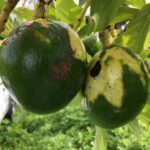Agronometrics in Charts: Rains leave favorable prospects for California avocados

In this installment of the ‘Agronometrics In Charts' series, Sarah Ilyas studies the state of the California avocado season. Each week the series looks at a different horticultural commodity, focusing on a specific origin or topic visualizing the market factors that are driving change.
This year's early season crop projection for California avocados has been released. The harvest estimate is 257 million pounds of avocados, which is a slight decrease compared to the 2021-22 season crop volume of 276 million pounds.
Central and Southern California is home to nearly 3,000 farms, with many experiencing years of drought and strict water restrictions. A decrease in the severity of the drought triggered by torrential rains has raised hopes that initial estimates may not capture the full success of farmers.
California avocado volume is expected to pick up momentum around March, with peak availability from April through July, supply will thereafter likely taper off through Labor Day.
The majority (243 million pounds) of the California avocado harvest is expected to be the Hass variety. The remaining forecast is 7 million pounds of Lamb Hass, GEM, 6 million, and about 1 million from other varieties that also are being commercially grown in California.
According to USDA data, the state annually produces around 86% of the crop, with Florida and Hawaii coming in a distant second and third.
"The recent California rainfall has been welcomed by our growers throughout all districts," Jeff Oberman, president of CAC, said in a statement.
"Growers have related increased sizing and crucial replenishment of water sources, during my recent visits to all production regions. We do not yet know if there will be any change to the expected harvest timing, however, excitement is building from our retail partners for the kick-off of the California season."
According to the Hass Avocado Board, 2,4 million pounds are expected from California for the week ending February 12, 2,6 million are expected for the week ending February 19 and 5,1 are projected for the week ending February 26.
Source: USDA Market News via Agronometrics. (Agronometrics users can view this chart with live updates here)
Imports of avocados are anticipated to be substantial in the United States in 2023, leading industry analysts to anticipate a more saturated market compared to 2022. “Last year, avocado shortages drove prices up and resulted in California growers collecting a phenomenal $1.76 per pound for their delicious fruit. This year, heavy supply is likely to push prices lower,” says Index Fresh CEO Steve Roodzant.
In 2023, the United States is anticipated to consume a record-breaking 3 billion pounds of avocados, with a volume that will constitute imports from Mexico, Peru, Colombia, and Chile as well as local production in California.
Despite the fact that California's market share is less than 10 percent overall, the spring and summer harvest normally plays a significant role by filling a low-volume slot that opens during Mexico's lighter months.
“Additionally, California avocados traditionally occupy a special market niche thanks to their excellent quality and the value that consumers increasingly place on locally sourced produce,” says Keith Blanchard, Index Fresh’s California field manager.
“The baseline price of avocados may be lower now than at the start of 2022, but we are confident that California avocados will continue to fetch a premium in 2023,” Keith adds.
Source: USDA Market News via Agronometrics. (Agronometrics users can view this chart with live updates here)
In our ‘In Charts’ series, we work to tell some of the stories that are moving the industry. Feel free to take a look at the other articles by clicking here.
All pricing for domestic US produce represents the spot market at Shipping Point (i.e. packing house/climate-controlled warehouse, etc.). For imported fruit, the pricing data represents the spot market at the Port of Entry.
You can keep track of the markets daily through Agronometrics, a data visualization tool built to help the industry make sense of the huge amounts of data that professionals need to access to make informed decisions. If you found the information and the charts from this article useful, feel free to visit us at www.agronometrics.com where you can easily access these same graphs, or explore the other 21 commodities we currently track.
















































